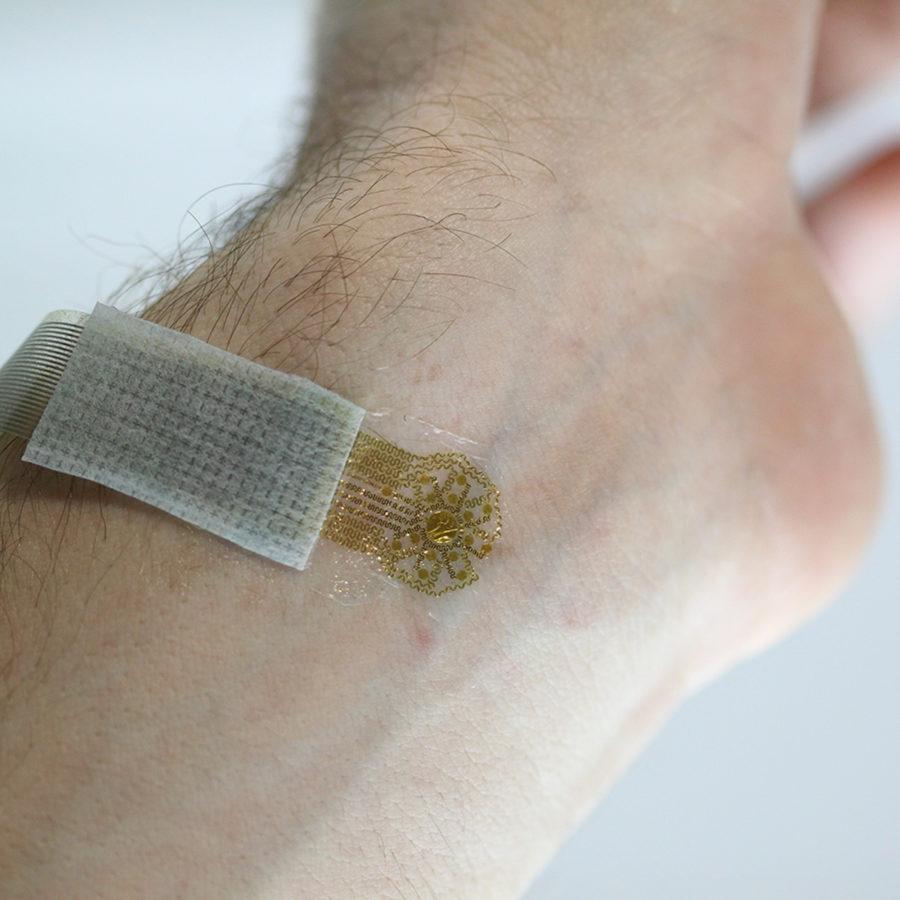UI researchers create blood tracking tattoo
Nov 17, 2015
Last updated on May 5, 2016 at 07:07 p.m.
This tattoo essentially acts like a sensor. Instead of confining patients to their hospital rooms, the new innovation allows patients to carry on with daily activities while wearing the sensor for 24 hours. To achieve that function, the sensor was designed to be soft and flexible to contour to the skin.
Siddharth Krishnan, a Ph.D. candidate in Engineering, explained the importance of the sensor’s durability.
“We’re trying to make them soft, flexible and stretchable,” he said. “The moment we’re able to do that and conform it to the skin, we are able get a signal out of it.”
Get The Daily Illini in your inbox!
Krishnan said the tattoo can also sense temperature and skin hydration levels. One of the objectives was learning how to map out blood flow on the surface blood vessels, using the soft sensor that configures to various skin textures, according to the team’s research report.
To visualize how the device functions, Krishnan said to imagine a tiny heater on a table with temperature sensors at certain fixed locations. The heat speeds up the flow along the table and the sensors will pick it up and register an increase in temperature. The sensor’s isotropic property distributes heat equally throughout the skin’s surface.
Next, Krishnan said to visualize something that moves the heat flow in a particular direction. Suppose a pipe with water embedded in the table was flowing along one direction, the heat would be flowing preferentially along that direction.
The research team translated the same idea to the tattoo. Instead of pipes, underneath human skin is blood vessels and veins. By heating a bit of skin up to a small degree and mapping out heat flow through the temperature sensors, the heat will essentially flow in the direction of the blood flow.
The research team has done numerous tests and collaborations with the National Student Health to validate measurements with their unique equipment.
The team’s second accomplishment has also been tracking blood vessels that were less prominent, like those in the palms of hands. They were able to measure the general level of circulation but with a slightly different data processing program.
The research also involved analytical mathematics. Engineering professor Yonggang Huang from Northwestern University collaborated with University researchers Chad Webb and Krishnan to convert the signal into quantitative data.
The idea of taking temperature mass and converting it into quantitative blood flow has existed for a long time but has been refined and altered in the past two years.
The University team is working with the cosmetic company, L’Oreal to expand on the project. The company has been interested in the technology and has contributed to quite a bit of funding for the ongoing research.
John Rogers, professor in Engineering and member of the research team, said the initial research paper on the project in 2011 triggered L’Oreal’s interest.
“Funding came from L’Oreal because they are interested in skin and blood flow and the effects on cosmetics appearance and the dermatology of their various products,” he said.
As for future plans, the team is envisioning a tracker that reads greater depths of the skin and is striving for completely wireless devices. They are immediately moving toward clinical environments to monitor wound healing or reforming vessels in skin grafts.
“This technology offers a lot of potential, in traditional means, and the ability to determine blood flow is confined to hospitals or laboratory setting because of the laser systems that are used to quantify flow,” Rogers said. “To my knowledge, there is no technology like this that allows continuous monitoring of blood flow in a course of a day.”
limbach2@dailyillini.com






